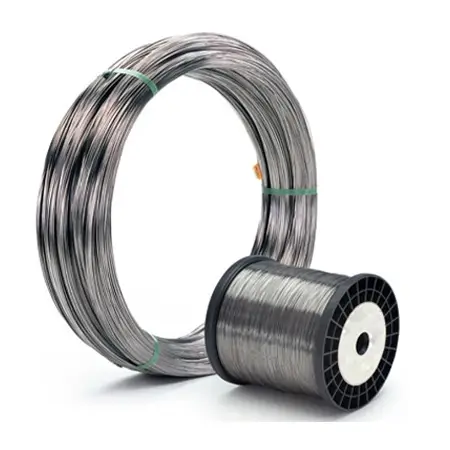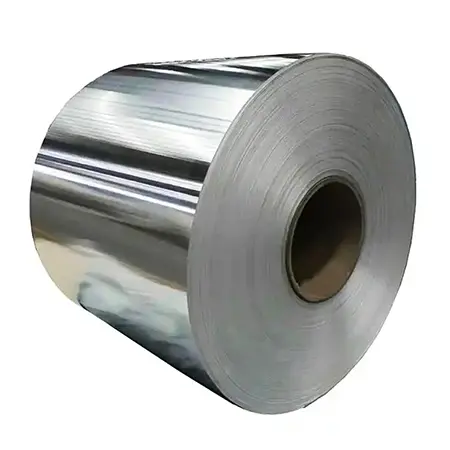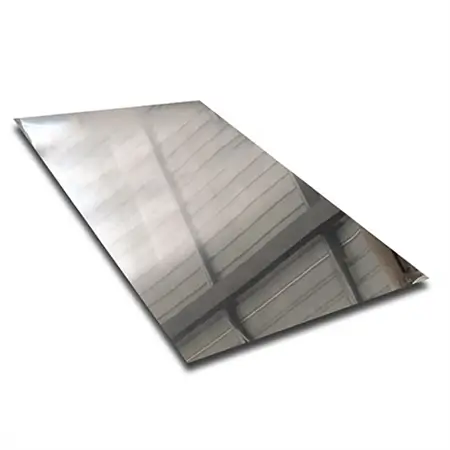Stainless Steel Wire refers to a versatile and corrosion-resistant wire product made from various grades of stainless steel. It is widely used across numerous industries due to its strength, durability, and resistance to rust, corrosion, and harsh environmental conditions. Stainless steel wires are available in different diameters, finishes, and temper conditions to suit a broad range of applications.
Composition:
The composition of Stainless Steel Wire can vary depending on the grade, but typically includes:
- Chromium (Cr): 10% to 20%, which provides excellent corrosion resistance by forming a passive oxide layer on the surface.
- Nickel (Ni): Present in varying amounts, it enhances corrosion resistance, formability, and toughness, particularly in austenitic grades like 304 and 316.
- Molybdenum (Mo): Added in higher grades such as 316 for increased resistance to pitting and crevice corrosion.
- Carbon (C), Silicon (Si), Manganese (Mn), Phosphorus (P), and Sulfur (S) may also be present in controlled quantities.
Characteristics:
1. Corrosion Resistance: Offers exceptional resistance to rust and chemical corrosion, making it suitable for outdoor or corrosive environments.
2. Strength: Provides high tensile strength, enabling use in load-bearing applications and structural components.
3. Formability: Can be drawn into fine wires and shaped into various forms without losing integrity or strength.
4. Durability: Resistant to wear, abrasion, and deformation under stress, ensuring long-lasting performance.
5. Aesthetic Appeal: Retains a clean and attractive appearance, making it ideal for architectural and decorative purposes.
6. Non-Magnetic Properties: Some grades, such as austenitic types, are non-magnetic in their annealed condition, although they can become slightly magnetic after cold working.
Use:
1. Construction Industry: Used in cable ties, mesh fencing, reinforcement bars, architectural support systems, and suspension cables.
2. Manufacturing: In springs, fasteners, welding electrodes, wire ropes, conveyor belts, and filtration systems.
3. Medical Devices: For surgical instruments, orthodontic wires, dental implants, and medical equipment.
4. Automotive Industry: In exhaust systems, fuel lines, safety restraints, and seatbelt mechanisms.
5. Electronics: As conductive wire, grounding wire, and in the manufacturing of electronic components.
6. Food and Beverage Industry: For food processing equipment, filters, and screens due to its hygienic properties and resistance to cleaning chemicals.
7. Art and Craft: In jewelry-making, sculpture, and other creative applications that require durable and aesthetically pleasing material.
In summary, Stainless Steel Wire is a multi-purpose material with an array of mechanical properties tailored to specific grades. Its resistance to corrosion and ability to maintain strength under various conditions make it a preferred choice in many industrial sectors and artistic applications alike.
| Steel Grade | Ni% Max. | Cr% Max. | C% Max. | Si% Max. | Mn% Max. | P% Max. | S% Max. | Mo% Max. | Ti% Max. | Other |
| SUS304 | 8.0~10.5 | 18.0~20.0 | 0.08 | 1.0 | 2.0 | 0.045 | 0.03 | - | - | - |
| SUS304L | 9.0~13.0 | 18.0~20.0 | 0.03 | 1.0 | 2.0 | 0.045 | 0.03 | - | - | Cu:1.0~3.0 |
| SUS316L | 12.0~15.0 | 16.0~18.0 | 0.03 | 1.0 | 2.0 | 0.045 | 0.03 | 2.0~3.0 | - | - |
| SUS321 | 9.0~13.0 | 17.0~19.0 | 0.08 | 1.0 | 2.0 | 0.045 | 0.03 | - | 5xC MIN. | - |
| SUH409L | 0.60 | 10.5~11.75 | 0.03 | 1.0 | 1.0 | 0.04 | 0.03 | - | 6xC~0.75 | - |
| SUS410S | 0.60 | 11.5~13.5 | 0.08 | 1.0 | 1.0 | 0.04 | 0.03 | - | - | - |
| SUS420J2 | 0.60 | 12.0~14.0 | 0.26-0.40 | 1.0 | 1.0 | 0.04 | 0.03 | - | - | - |
| SUS430 | 0.60 | 16.0~18.0 | 0.12 | 0.75 | 1.0 | 0.04 | 0.03 | - | - | - |




